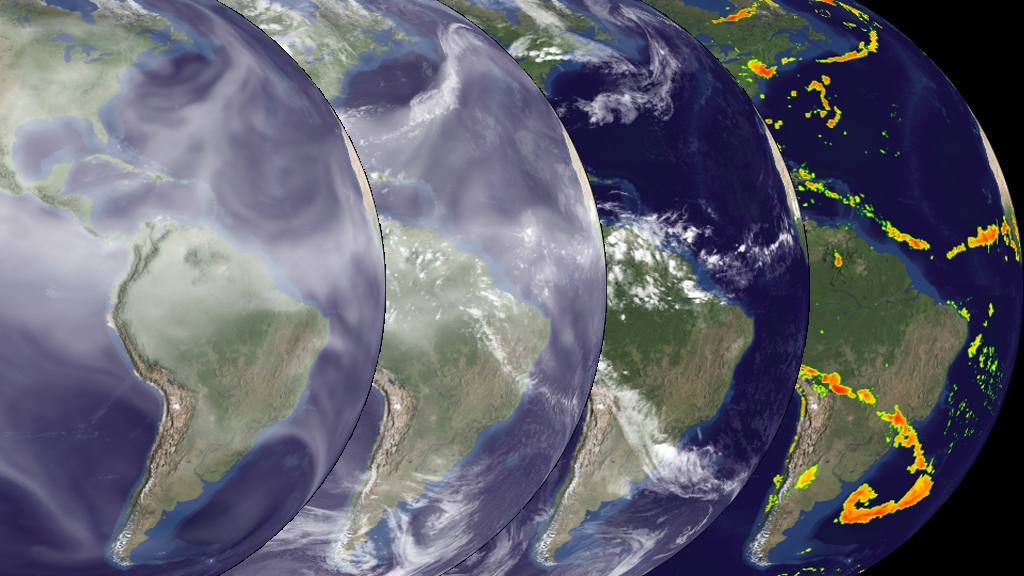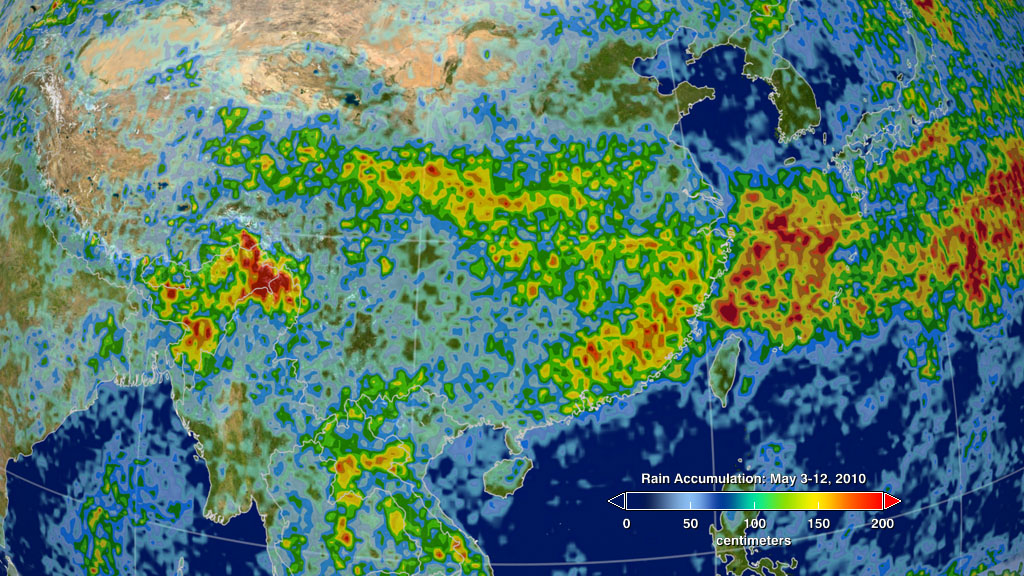Earth
ID: 10884

Water vapor drifting above the oceans is carried over land by winds, and eventually falls to the surface in the form of rain and snow. As evaporated water rises in the atmosphere, it expands and cools. In the presence of dust, ice or salt, water vapor in the saturated air condenses around these particles into tiny droplets or ice crystals, forming clouds. Around half of our planet is covered with clouds at any one time. Since clouds reflect sunlight away from the Earth, they play a vital role in the Earth's climate and energy balance. As these droplets and ice crystals accumulate more water, they become heavier and are pulled from the sky by gravity as rain and snow. In this way, water is returned to land in a form that plants and animals can use. About 100 trillion tons of water falls on land each year, compared to 400 trillion tons over the oceans. Watch how water vapor moves through the atmosphere and returns to Earth as rain and snow in the visualizations below—first on a globe and then on a map of the entire world.

The Water Cycle: Watering The Land


Story Credits
Lead Visualizer/Animator:
Horace Mitchell (NASA/GSFC)
Producer:
Horace Mitchell (NASA/GSFC)
Lead Writer:
Horace Mitchell (NASA/GSFC)
Horace Mitchell (NASA/GSFC)
Producer:
Horace Mitchell (NASA/GSFC)
Lead Writer:
Horace Mitchell (NASA/GSFC)
Please give credit for this item to:
NASA's Goddard Space Flight Center
NASA's Goddard Space Flight Center
Short URL to share this page:
https://svs.gsfc.nasa.gov/10884
Keywords:
SVS >> App
NASA Science >> Earth
https://svs.gsfc.nasa.gov/10884
Keywords:
SVS >> App
NASA Science >> Earth







